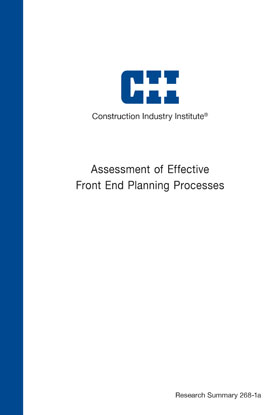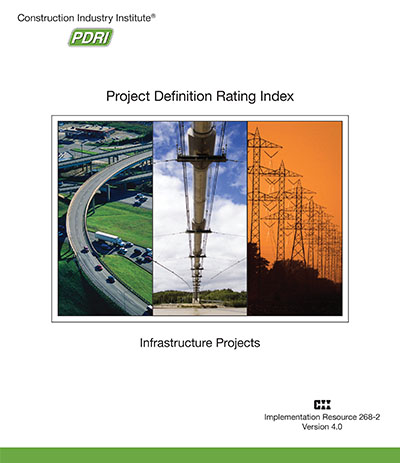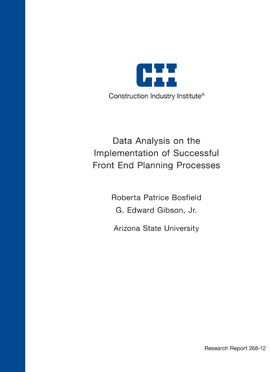
Assessment of Effective Front End Planning Processes
Since its founding in 1983, CII has been a driving force for process improvement in the construction industry. By 1991, CII had begun funding a significant research thread focused on front end planning (FEP). Since then, this ongoing effort has described and modeled the process in detail, has led to the development of a number of tools that project teams can use to improve their FEP practice, and has proven that FEP is critical to project success.
FEP is the process of developing strategic information to identify risks and determine the resources needed to mitigate those risks. The purpose of the FEP process is to create an environment very early in the project life cycle in which project teams can effectively analyze and address potential projects’ risks. The desired result is to be able to successfully manage a project through detailed design and construction. With effective FEP, risks can be mitigated through the development of detailed scope definition and the subsequent efficient use of project resources.
This research summary describes the FEP research thread pursued by CII over the past two decades. Specifically, it details the FEP tools developed for early project planning, and the data gathered to analyze the tools used within the CII community. The CII FEP research effort can be summarized as follows:
- Since 1991, nine CII teams have addressed front end planning issues and developed effective management tools focused on the process.
- CII front end planning research teams have used a variety of research methods over the years to engage more than 800 industry professionals from 279 organizations, and studied 1,081 projects worth $96.5 billion. This remarkable outreach illustrates the rigor and breadth of the effort.
- CII research has shown conclusively that effective front end planning leads to added project value. Assessments of projects with effective front end planning have shown cost differences of six to 25 percent, and schedule differences of six to 39 percent.
This research summary also presents data from a 2011 survey focused on the current state of FEP tool usage and implementation within CII. These data show the FEP tools that are commonly used, how they are used, and the common barriers that inhibit successful FEP implementation. In total, 59 completed surveys were received, with over 75 percent of respondents reporting the use of at least one CII tool in their front end planning processes.
The findings from twelve in-depth case studies are also shared in this summary. The research team used the case study interviews to gather detailed responses from organizations on the implementation of their FEP processes. The data show that CII organizations continue to find value in CII FEP tools, due to increased usage of them. The interviews also indicate that organizations must have strong management commitment, measured succession planning, and a standardized planning process to increase the likelihood of successful FEP strategies



